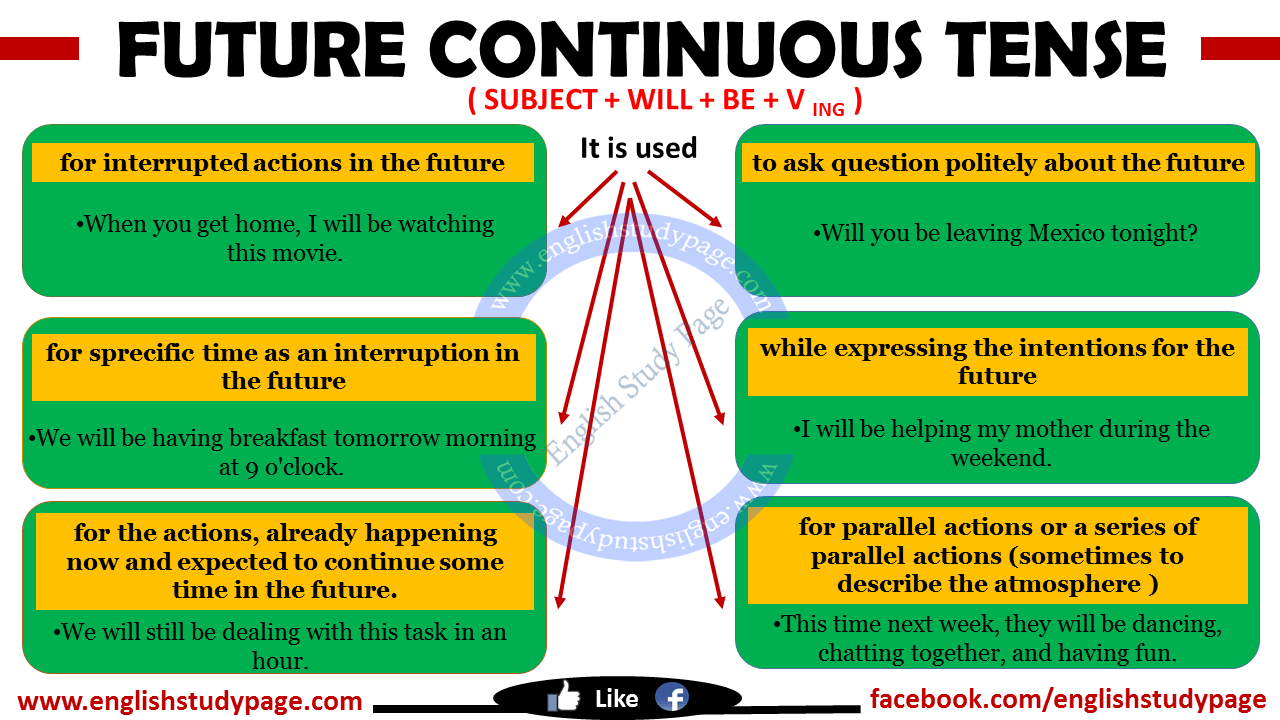
Future Continuous Tense English Study Page
The structure of the Future Continuous tense is: For negative sentences in the Future Continuous tense, we insert not between will and be. For question sentences, we exchange the subject and will. Look at these example sentences with the Future Continuous tense: We sometimes use shall instead of will, especially for I and we.
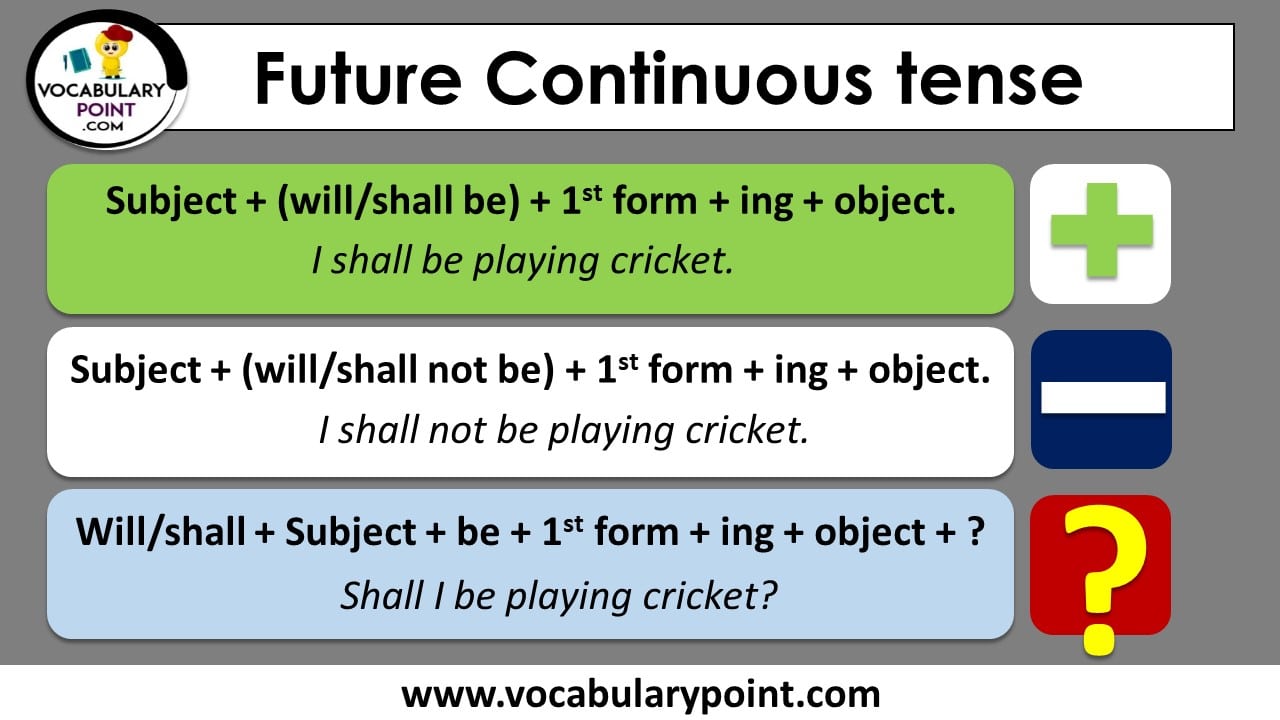
future continuous tense structure Archives Vocabulary Point
What will you be doing tonight? In this lesson, we will take an in-depth look at asking questions using the future continuous using question words. These words are who, what, where, when, why, and how. Follow this pattern. Question Word + will + subject + be + present participle…? What will you be doing today at 5 pm?
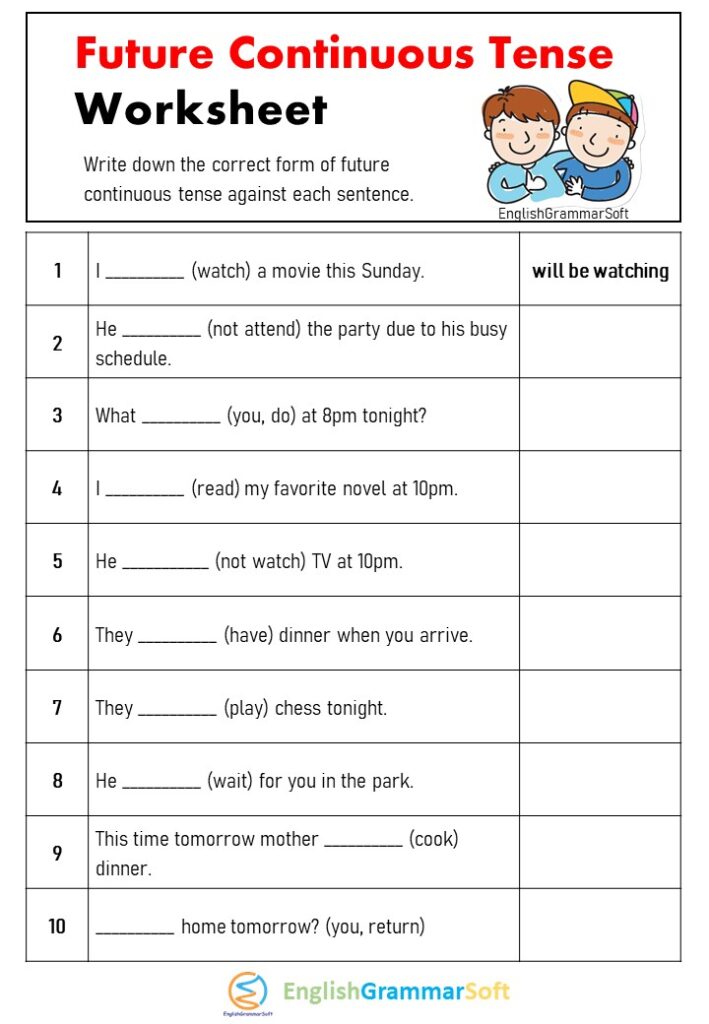
Worksheet on Future Continuous Tense with Answers EnglishGrammarSoft
Here's the third exercise about the future continuous tense (also called 'future progressive'). It's to practise making future continuous questions. Review how to make the future continuous here. Download this quiz in PDF here. Future Continuous Questions Make future continuous questions Do you want to master English grammar?
Future continuous tense multiple choice test
Future Continuous Quiz You can do this grammar quiz online or print it on paper. It tests what you learned on the Future Continuous page. 1. I ________ during rush hour. will be driving will have drive will be drive 2. He will not be _____ the bus today. take taken taking 3. They ________ the cottage that weekend. using 'll be using 're be using 4.

Future Continuous Tense Rules And Examples EnglishTeachoo
Future continuous positive form. To form the future continuous, we use will be + the infinitive of the verb + an -ing ending. It is also possible to use contractions as show in the chart above: They will be skiing this weekend. / They 'll be skiing this weekend. You will be see ing my brother next week in Tokyo.
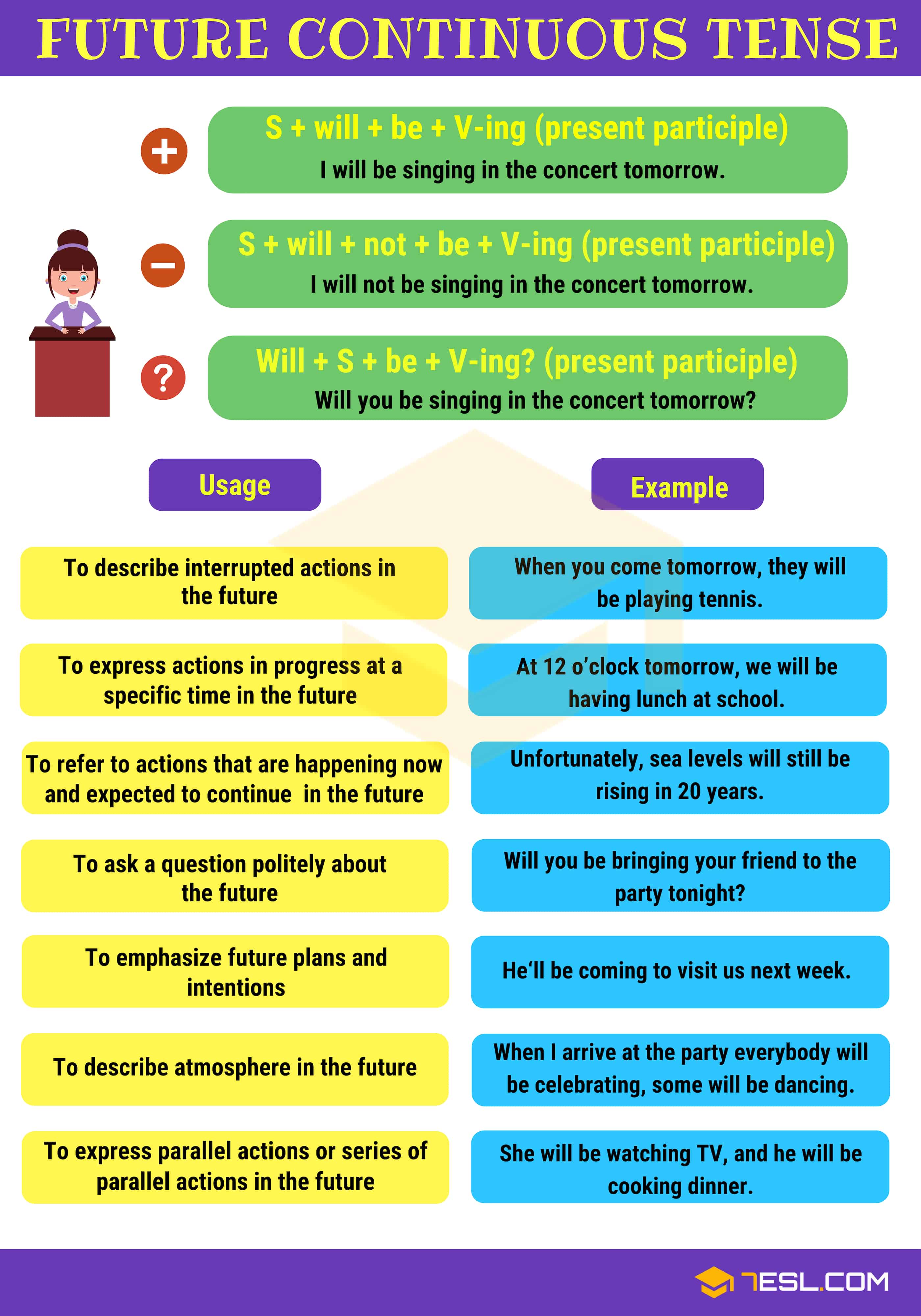
Future Continuous Tense Definition, Rules and Useful Examples
1. you me when you leave for Japan? (to text) Will be texting. 2. she at this time tomorrow? (to sleep) Will be sleeping. 3. they their teacher at this time on Saturday? (to help) Will be helping.
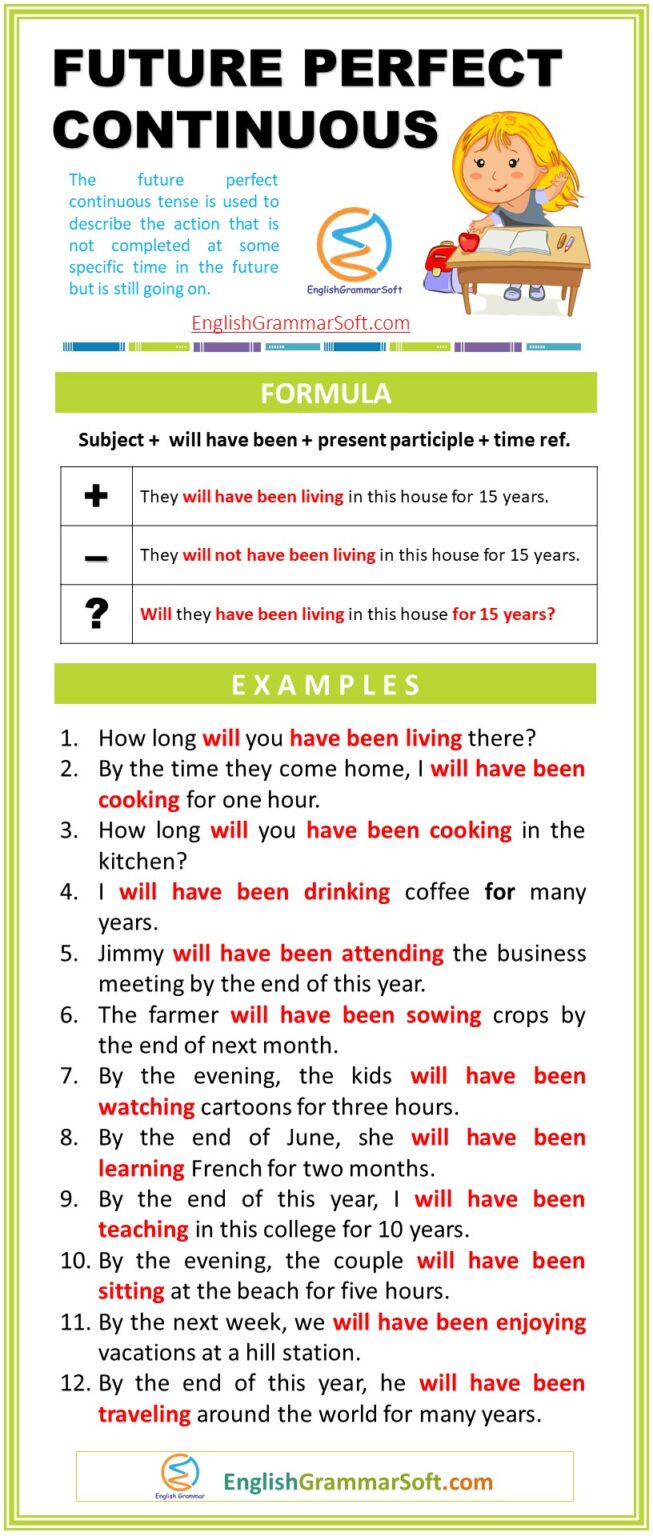
Future Perfect Continuous Tense Examples, Formula and Exercises
The FUTURE CONTINUOUS TENSE ("I will be working") is used often by native speakers, yet many English learners have never learned it. Now, you can master it! I'll show you exactly when and how to use it. This is a full English class, where you will learn structure, usage, pronunciation, spelling, contractions, questions, short answers, stative verbs, and common errors. We'll practice.
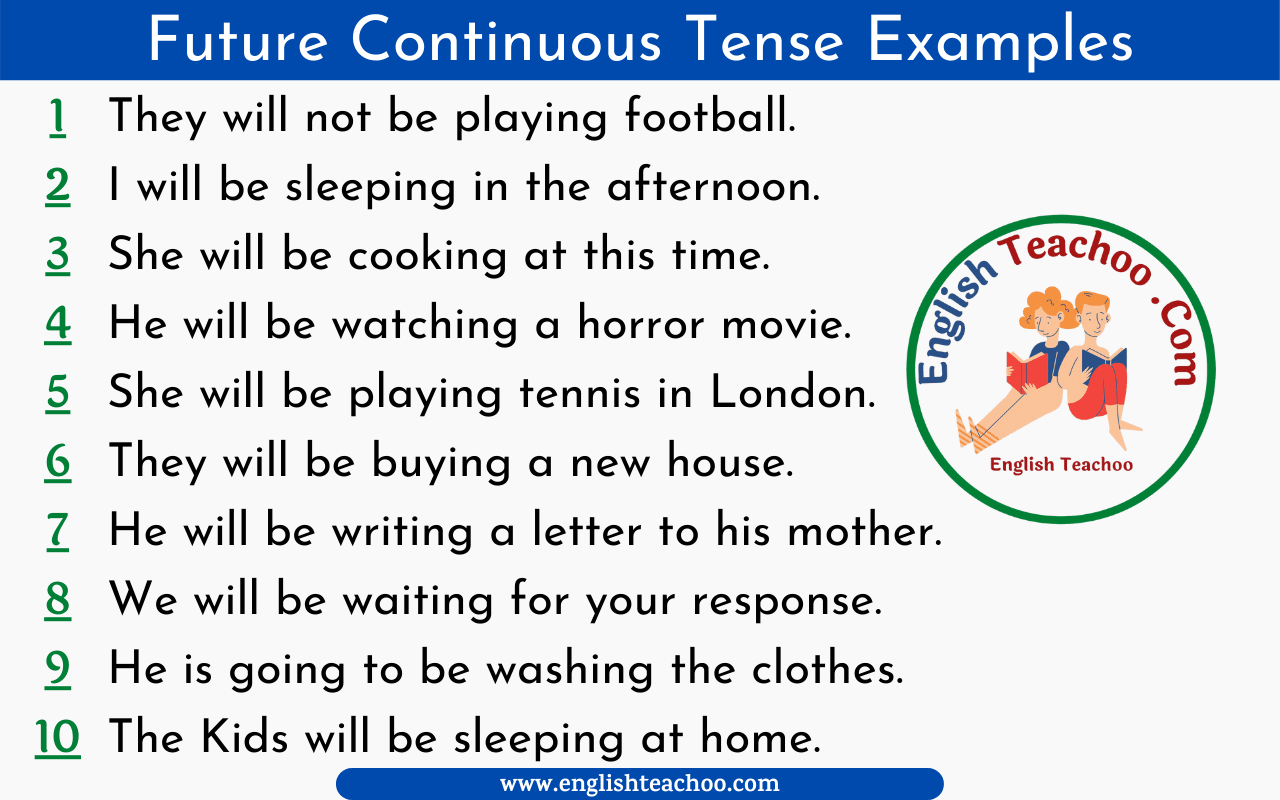
Future Continuous Tense Examples EnglishTeachoo
The future continuous tense, also known as the future progressive tense, is used to discuss an action that will happen and continue in the future. When you use the future continuous tense, you'll need to use the simple future of the verb "to be" with the present participle of a verb. So, if you see the verb "will be" combined with the.

English Future Continuous Tense, Definition and Examples Future
Answers Question 1: B (simple future tense because it does not point to a specific time) Question 2: C (future perfect tense because it refers to a specific point in the future) Question 3: B ("Shall" is used when the subject is I or we, while "will" is used for the second person)
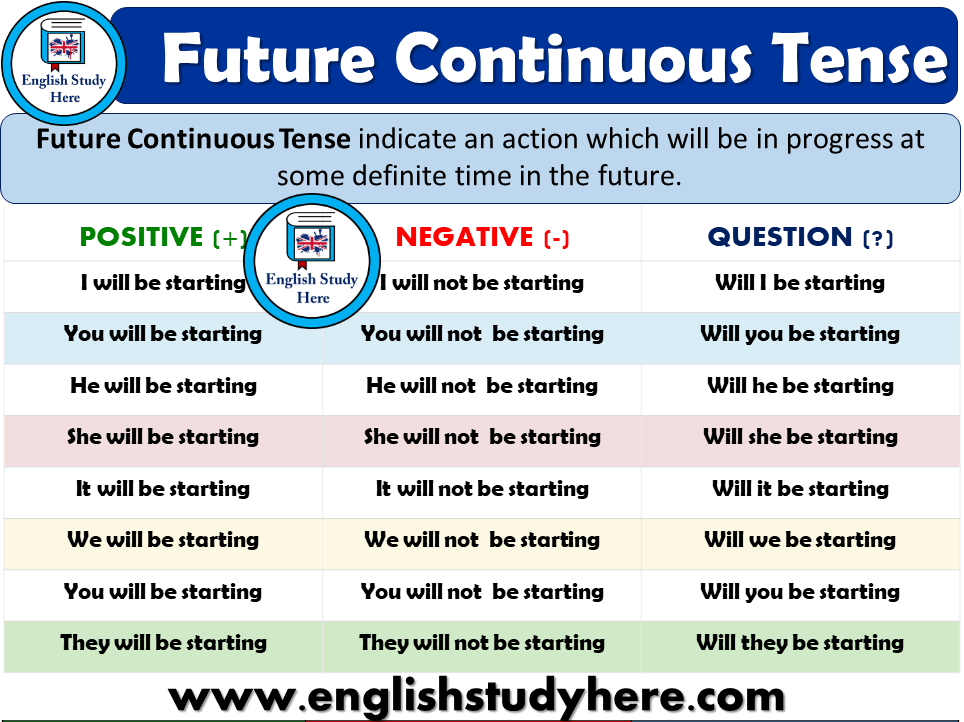
Future Continuous Tense Detailed Expression English Study Here
The Future Continuous Perfect English Grammar Also called the future progressive tense The future continuous tense isn't taught very much in English classes but, in fact, English speakers use it a lot. You will sound much more natural if you master this tense. Click here to download this explanation as a pdf.
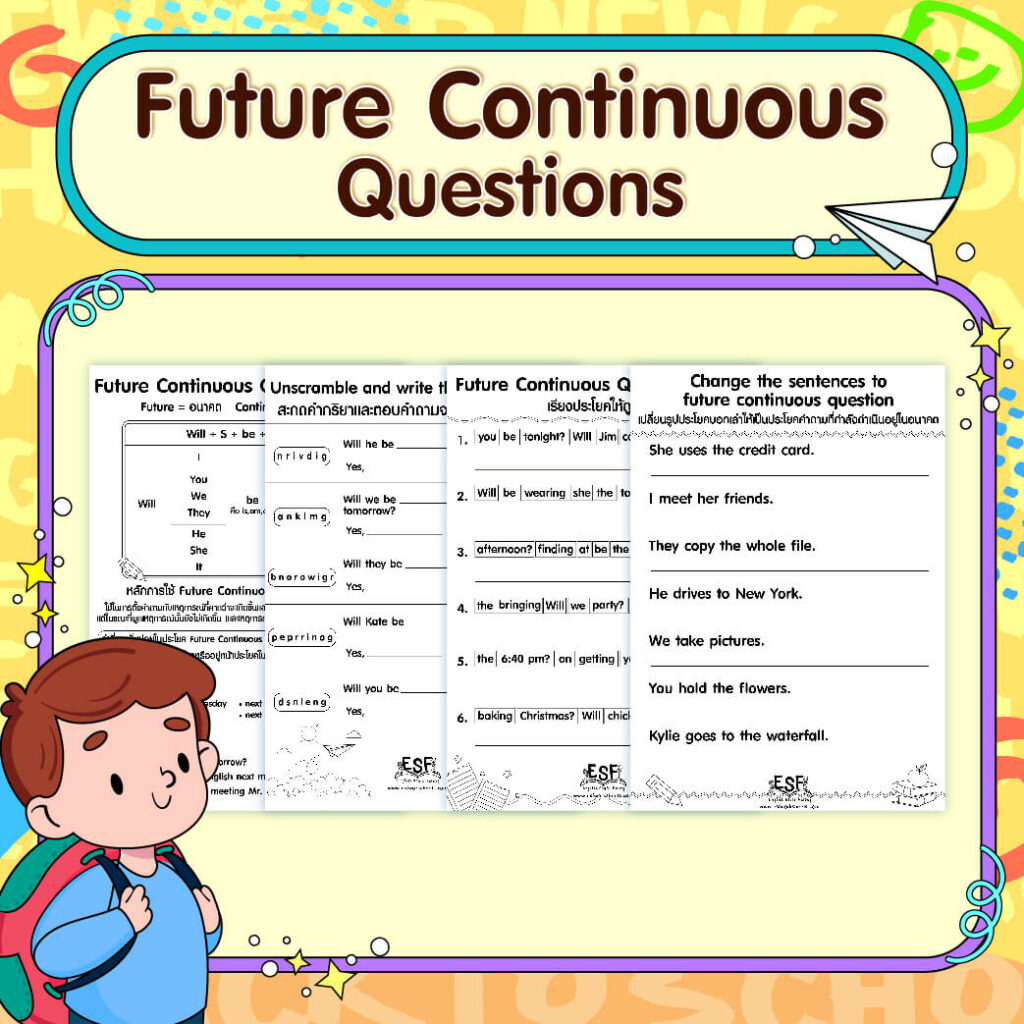
Future Continuous Questions แบบฝึกหัดวิธีการตั้งคำถามและตอบคำถาม
The future continuous tense is formed by using the auxiliary verb "will" followed by "be" and the present participle of the main verb, "-ing". The structure of a future continuous sentence is as follows: Subject + will + be + present participle (-ing) form of the main verb. For example, "I will be studying" or "She will be working".

Future Continuous Tense Definition, Examples, & Formula
The future continuous tense is formed using the auxiliary verb "will" and the present participle (-ing form) of the main verb. In this post This is the structure of the future continuous sentences: Subject Will / won't Be Verb + ing I will be cooking She will be exercising We won't be driving won't

Future Continuous Tense Exercises with Answers »
The future continuous tense is an English future tense that refers to something that's predicted to happen in the future and will continue after this time. Essentially, we use it to talk about continuous actions that will occur in the future.
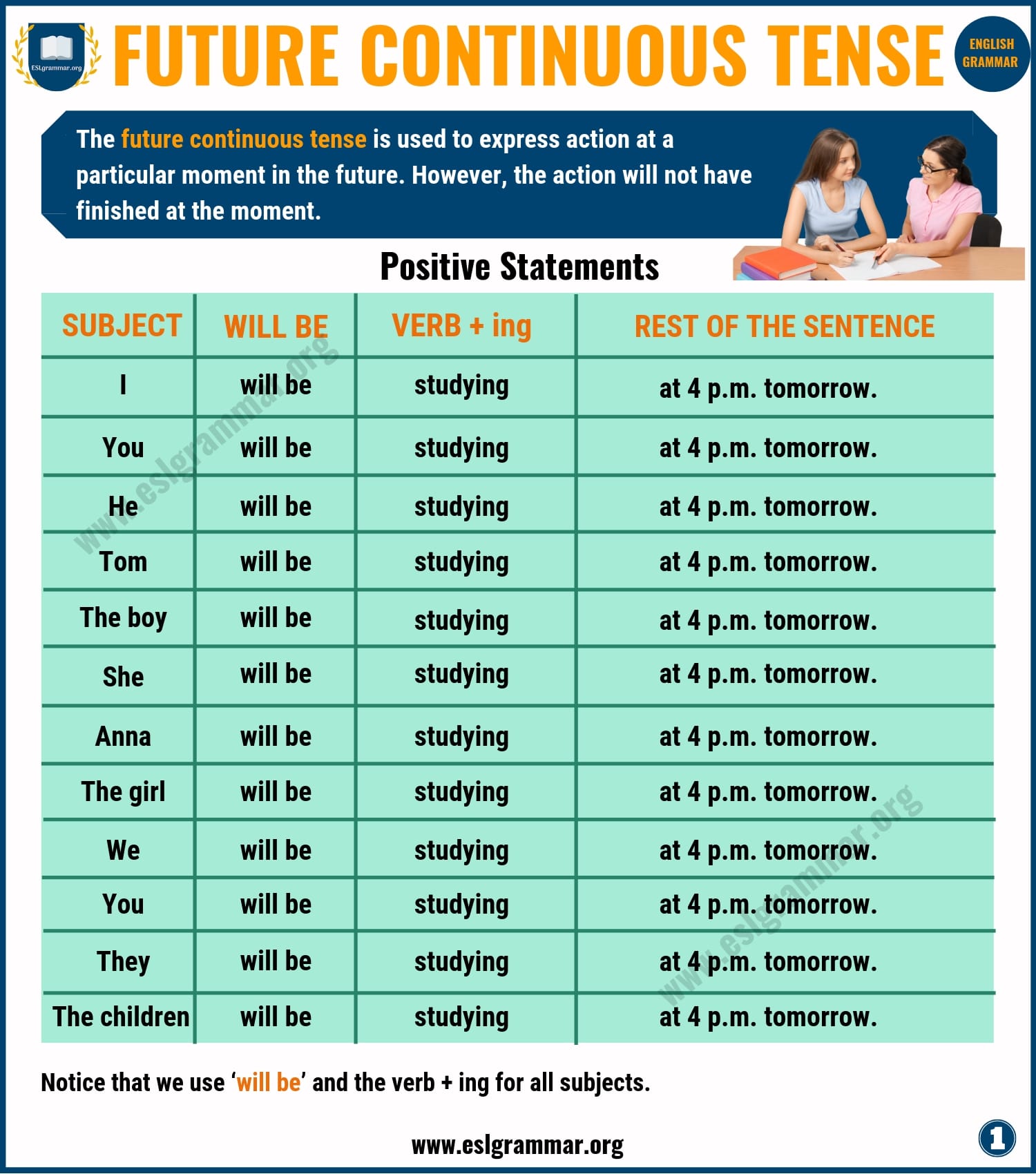
Future Continuous Tense Definition & Useful Examples ESL Grammar
However, future continuous tense is less common in use. Most times simple future and future continuous forms are used interchangably. The verb in the future continuous tense is made of two parts: The future tense form of verb 'to be' - will be 'ing' affixed to the base verb. Sentences in the future continuous form have a specified.
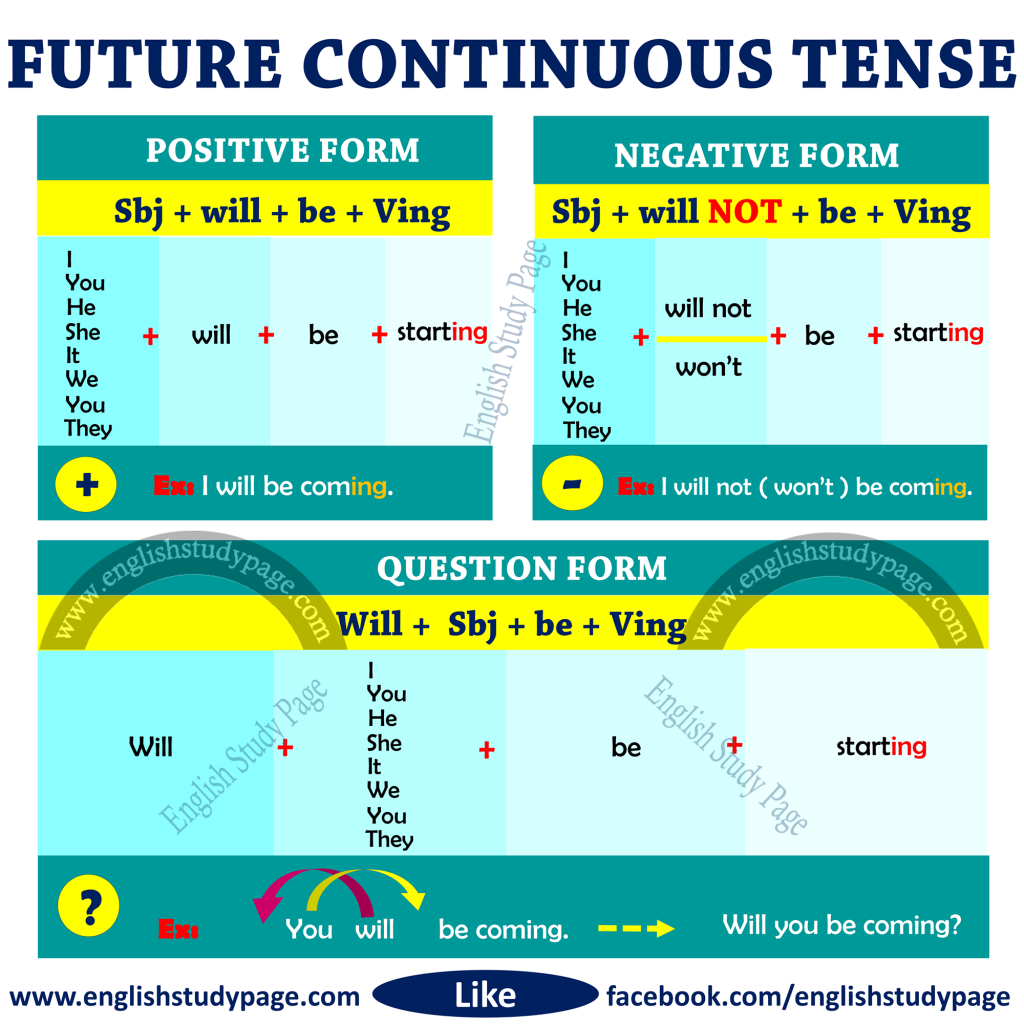
Structure of Future Continuous Tense English Study Page
We use the future continuous to talk about actions or events that will happen or continue for a certain time in the future. Remember that the future continuous is a combination of the simple future tense (I will play) and the present continuous tense (I am playing). I will be working from 3 to 5 tomorrow. Will you be traveling this summer?
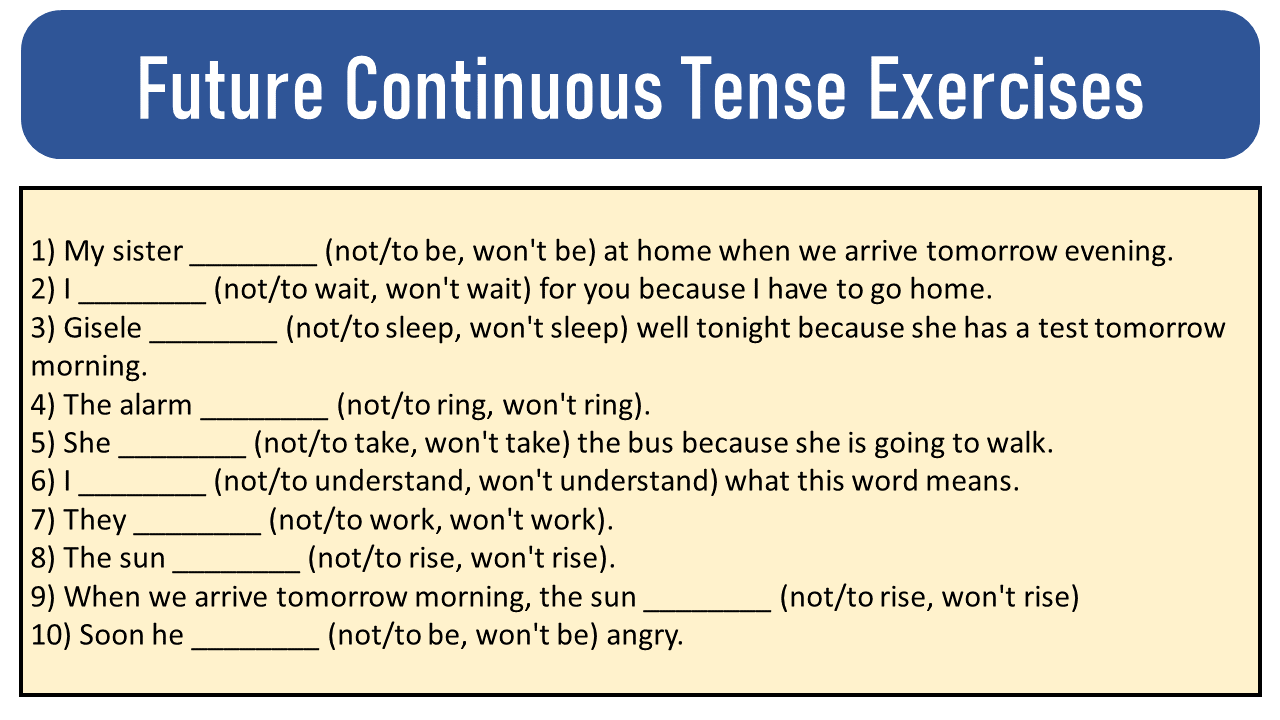
20 Exercises of Future Continuous Tense, Structure and Worksheet
Learn how and when to use the Future Continuous Tense (or the Future Progressive) in English with grammar rules, examples, video and ESL worksheets. The Future Progressive Tense is used: To describe interrupted actions in the future. Example: When you come tomorrow, they will be playing tennis. To express actions in progress at a specific time.